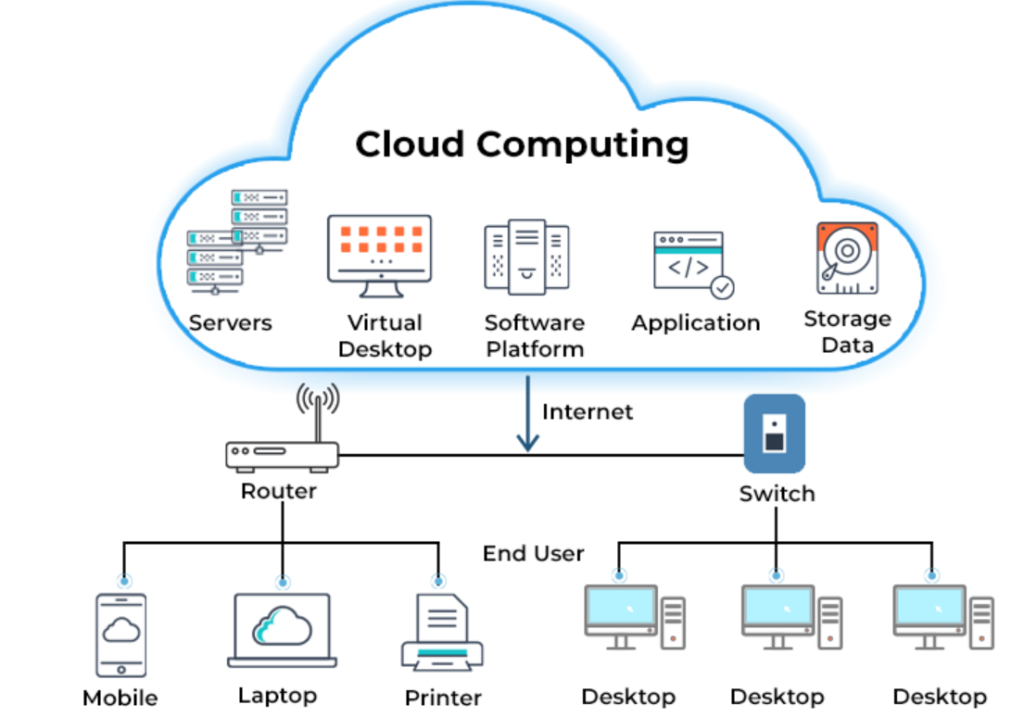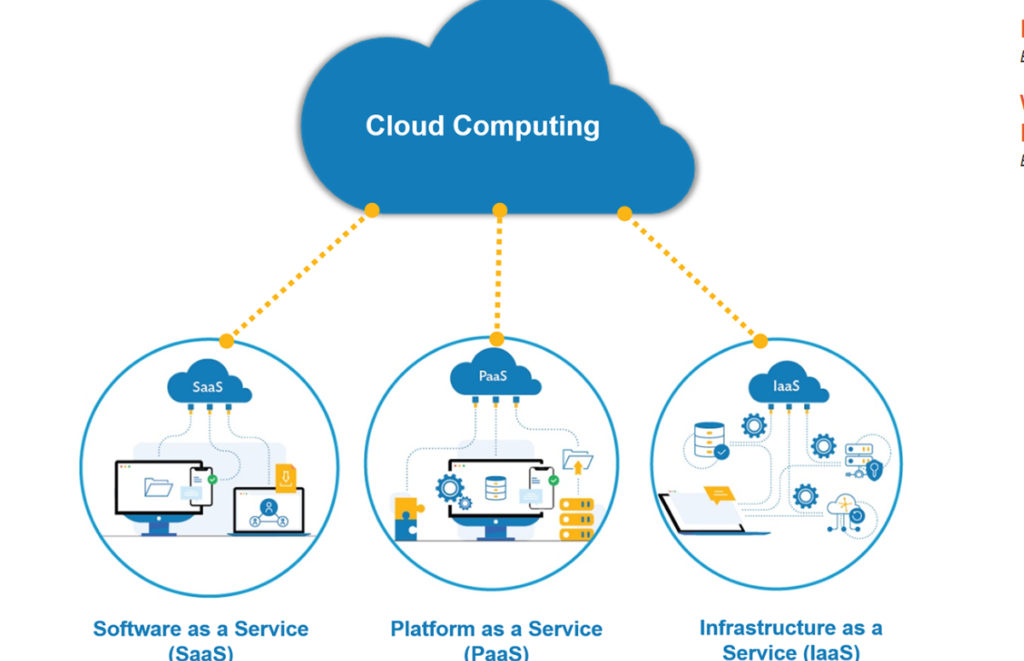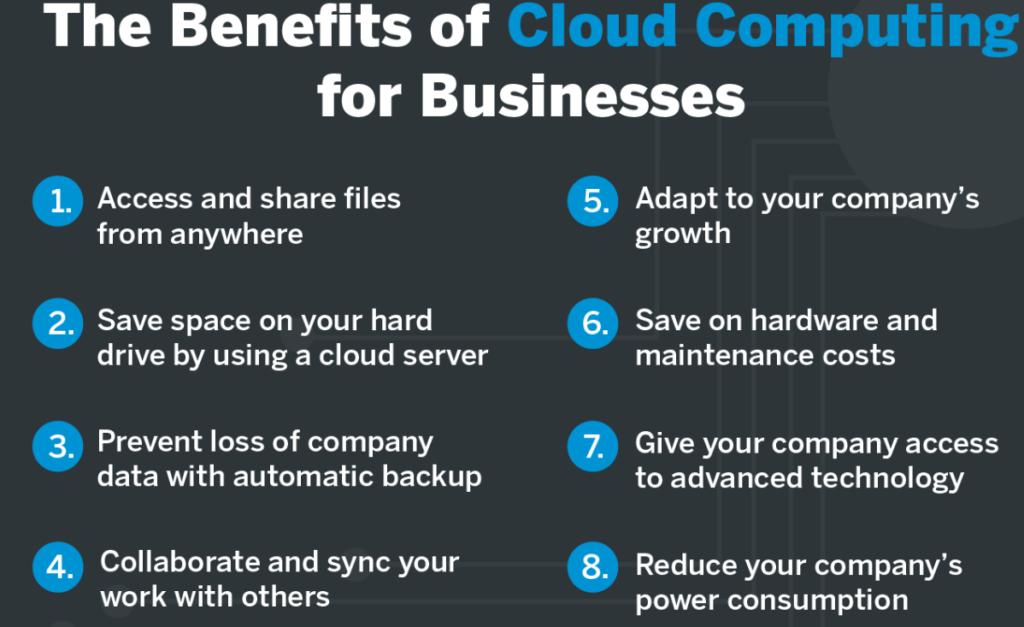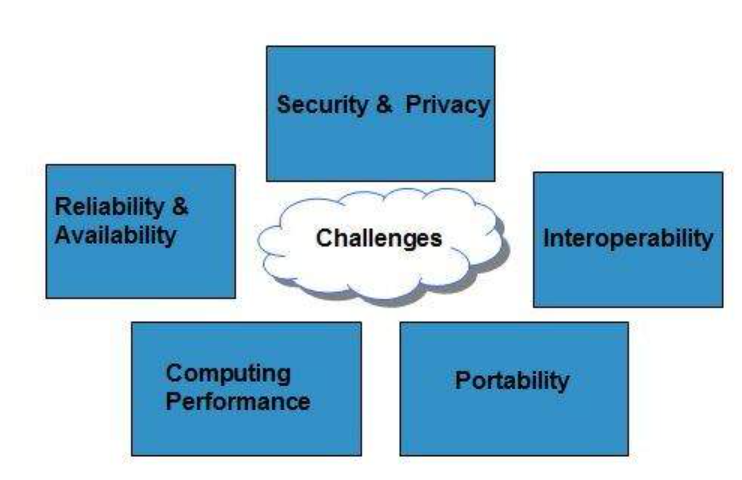Cloud computing has revolutionized the IT industry by providing a way to deliver computing resources over the internet. In simple terms, cloud computing refers to the delivery of computing services, including servers, storage, databases, networking, software, and analytics, over the internet. Cloud computing has become a popular choice for businesses and individuals alike, due to its flexibility, scalability, and cost-effectiveness.
Cloud computing provides a way for users to access computing resources on-demand, without the need for physical infrastructure. In the past, businesses and individuals had to purchase their own servers, storage devices, and software licenses, which could be expensive and time-consuming to maintain. With cloud computing, users can access these resources on-demand, and only pay for what they use.

There are three main types of cloud computing services:
- Infrastructure as a Service (IaaS): IaaS provides users with access to computing resources, such as virtual machines, storage, and networking, over the internet. Users can rent these resources on-demand and pay only for what they use.
- Platform as a Service (PaaS): PaaS provides users with a platform for building, testing, and deploying applications. Users can develop their applications using pre-built tools and services, without having to worry about the underlying infrastructure.
- Software as a Service (SaaS): SaaS provides users with access to software applications over the internet. Users can access these applications through a web browser, without having to install or maintain any software locally.

Ways of adaptability to cloud:
- Plan your migration strategy: Before migrating to the cloud, it’s important to have a migration strategy in place. This strategy should include a plan for which applications and data will be moved to the cloud, as well as how the migration will be performed. You should also consider factors such as data security, compliance, and budget.
- Choose the right cloud provider: Choosing the right cloud provider is critical to the success of your cloud migration. You should consider factors such as reliability, scalability, security, and cost-effectiveness when selecting a cloud provider. It’s also important to choose a provider that offers the right level of support and services for your business needs.
- Evaluate your existing applications and data: Before migrating to the cloud, it’s important to evaluate your existing applications and data to determine which ones can be moved to the cloud. You should consider factors such as compatibility, performance, and security when evaluating your applications and data.
- Develop a cloud-native architecture: To fully take advantage of the benefits of cloud computing, it’s important to develop a cloud-native architecture. This architecture should be designed to take advantage of cloud services such as serverless computing, containerization, and microservices. This will help to ensure that your applications are optimized for the cloud and can take advantage of its scalability and flexibility.
- Implement cloud security best practices: Cloud security is a critical consideration when migrating to the cloud. You should implement best practices such as data encryption, access controls, and network security to ensure that your data and applications are protected. You should also ensure that you have a disaster recovery plan in place to ensure that your data is backed up and can be recovered in the event of a disaster.
- Train your employees: Migrating to the cloud requires a shift in mindset and skillset for both IT professionals and end-users. It’s important to train your employees on how to use cloud-based applications and services, as well as how to use the new tools and technologies that come with cloud computing.
Cloud computing offers several benefits to businesses and individuals:
- Flexibility: Cloud computing provides users with the flexibility to scale their computing resources up or down as needed, depending on their workload. This means that businesses can quickly adapt to changes in demand, without having to invest in new hardware.
- Scalability: Cloud computing allows businesses to scale their resources as needed, without having to worry about the underlying infrastructure. This means that businesses can quickly respond to changes in demand, without having to invest in new hardware.
- Cost-Effectiveness: Cloud computing can be more cost-effective than purchasing and maintaining physical infrastructure. Users only pay for what they use, and can scale their resources up or down as needed, without having to worry about the underlying infrastructure.
- Security: Cloud computing providers invest heavily in security, and offer several security features, such as data encryption and access controls, to protect users’ data and applications.
- Accessibility: Cloud computing allows users to access their resources from anywhere, as long as they have an internet connection. This means that businesses can have a distributed workforce, and individuals can work from anywhere in the world.

However, there are also some challenges associated with cloud computing:
- Dependence on Internet Connectivity: Cloud computing requires a reliable internet connection, and users may experience downtime or slow performance if their connection is unreliable.
- Data Security: While cloud computing providers invest heavily in security, users are still responsible for securing their own data and applications. Users must ensure that they have appropriate access controls, encryption, and backup procedures in place.
- Vendor Lock-In: Users may become dependent on their cloud computing provider, and may find it difficult to switch to another provider in the future. This can be problematic if the provider experiences downtime, or if the provider increases its prices.

In conclusion, cloud computing has transformed the IT industry by providing a way to deliver computing resources over the internet. Cloud computing offers several benefits, including flexibility, scalability, cost-effectiveness, security, and accessibility. However, there are also some challenges associated with cloud computing, such as dependence on internet connectivity, data security, and vendor lock-in. Despite these challenges, cloud computing is expected to continue to grow in popularity in the coming years, as more businesses and individuals move their computing resources to the cloud.
